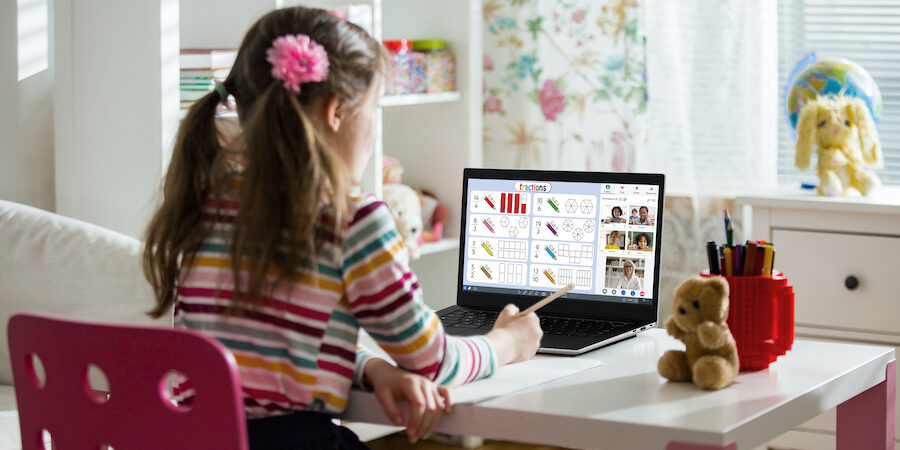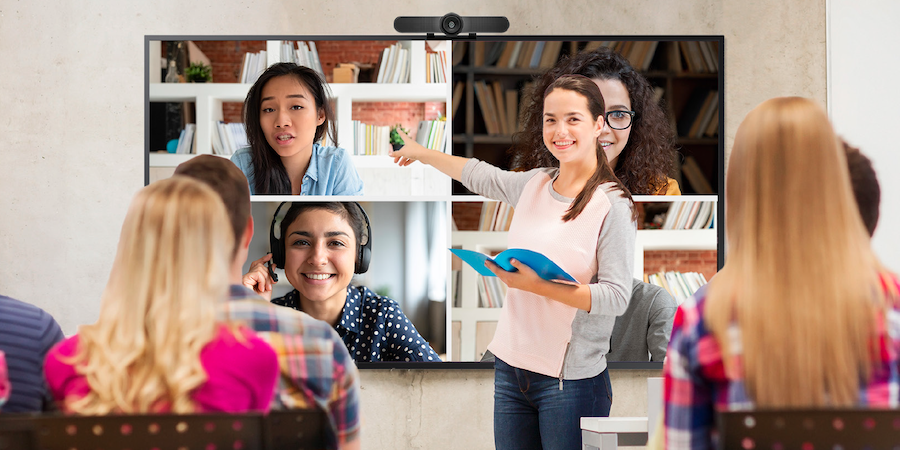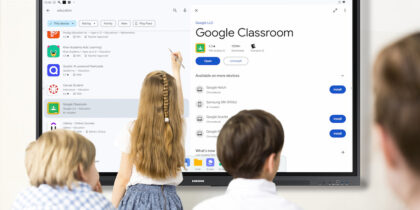“Since the pandemic …” is a phrase that is often used when describing the differences in the world since COVID-19 turned our lives upside down and inside out. This was felt in the education world like a tsunami. Thrusting teachers — whether they wanted to or not, whether they were prepared or not — into a completely new, technology-based “classroom.” When we all entered back into our schools, it felt different.
The evolving digital landscape
I taught middle school English language arts (ELA) for 10+ years. When our school went 1:1 in 2016, we handed them their shiny new Chromebooks along with a “contract” of Don’ts to be signed by parents and students before they could take them home. We also filed them into the auditorium for a speech from the principal as well as their homeroom teacher.
All of this was to warn them of the perils of the internet, the longevity of your digital footprint, the pitfalls of the World Wide Web, stranger danger and firewalls. This was not to frighten them, and in our defense, there wasn’t a great deal of information on how to prepare students for their foray into the digital forest while dropping digital breadcrumbs along the way.
How to power the inclusive classroom
Get your free guide to giving every student a voice in a hybrid learning world with Samsung and Cisco. Download Now
When I returned to research the topic recently, the world of information on being a good digital citizen and digital literacy had grown extensively. While I scrolled through the extensive information on the topic, I was thrilled there was so much information and so many free resources available to teachers and schools. It was also daunting. I had to ensure I was on vetted sites, comb through research and compare approaches.
I set out to compile the information that would define, clarify and provide easy access to free created content from venerable, trusted resources. Educators feel the pressure to provide their students with the necessary skills to communicate and collaborate online safely and responsibly. The resources and information discussed below give teachers access to content backed by data-driven scientific research that can be embedded across content and grade level without sacrificing hours of their ever-dwindling time.
I concentrated my focus on three main resources: ISTE DigCit, Common Sense Media and a 2021 study on digital literature from the Journal of Educational Technology and Online Learning (JETOL). There are links to other resources as well, which I thought were content-rich and easy to use.
Resources for teaching digital citizenship
JETOL’s full literature review can be found here. It is a deep dive into how digital skills need to be embedded into our content to prepare our students for life in school and beyond. JETOL started its research with ISTE’s definition of what constitutes a “good digital citizen.” This is an informative springboard of background knowledge before analyzing resources to use in your classroom.
ISTE DigCit
ISTE’s standards for technology in education are the accepted standards schools follow. They also have printable posters to display in your classroom, which are helpful reminders to students while using technology.
ISTE’s website provides classes, lesson plans, strategies and created content to use with your students. They hold an annual conference solely about digital citizenship with speakers that share resources and techniques. Their site on YouTube has videos from their past DigCit Connect Conference with further resources.
Common Sense Media
Common Sense Media worked with Project Zero from the School of Education at Harvard. They created a Digital Citizenship Curriculum that’s free for K-12.
Most of us are already familiar with Brain Pop. Along with their content-rich videos, games and quizzes, they also offer an entire section about building 21st-century skills in our students.
Be Internet Awesome by Google
Many of Be Internet Awesome’s games and curriculum have the ISTE seal of approval and follow ISTE guidelines. They focus on vetting sources, keeping yourself and your identity online secure and safe, and being kind to those we interact with online.
Additional resources
All of the resources provided are free or have free trials. They are backed up by the technology standards all of our schools follow. The amount of information can be overwhelming because it is so plentiful. With the majority of our students being 1:1, teachers need to work with family and community to help them navigate the technological world. I’ve included some alternate resources below.
Samsung’s latest education technology delivers an engaging hybrid digital learning experience inside the classroom. And learn how interactive learning engages students and improves outcomes in this free whitepaper.









